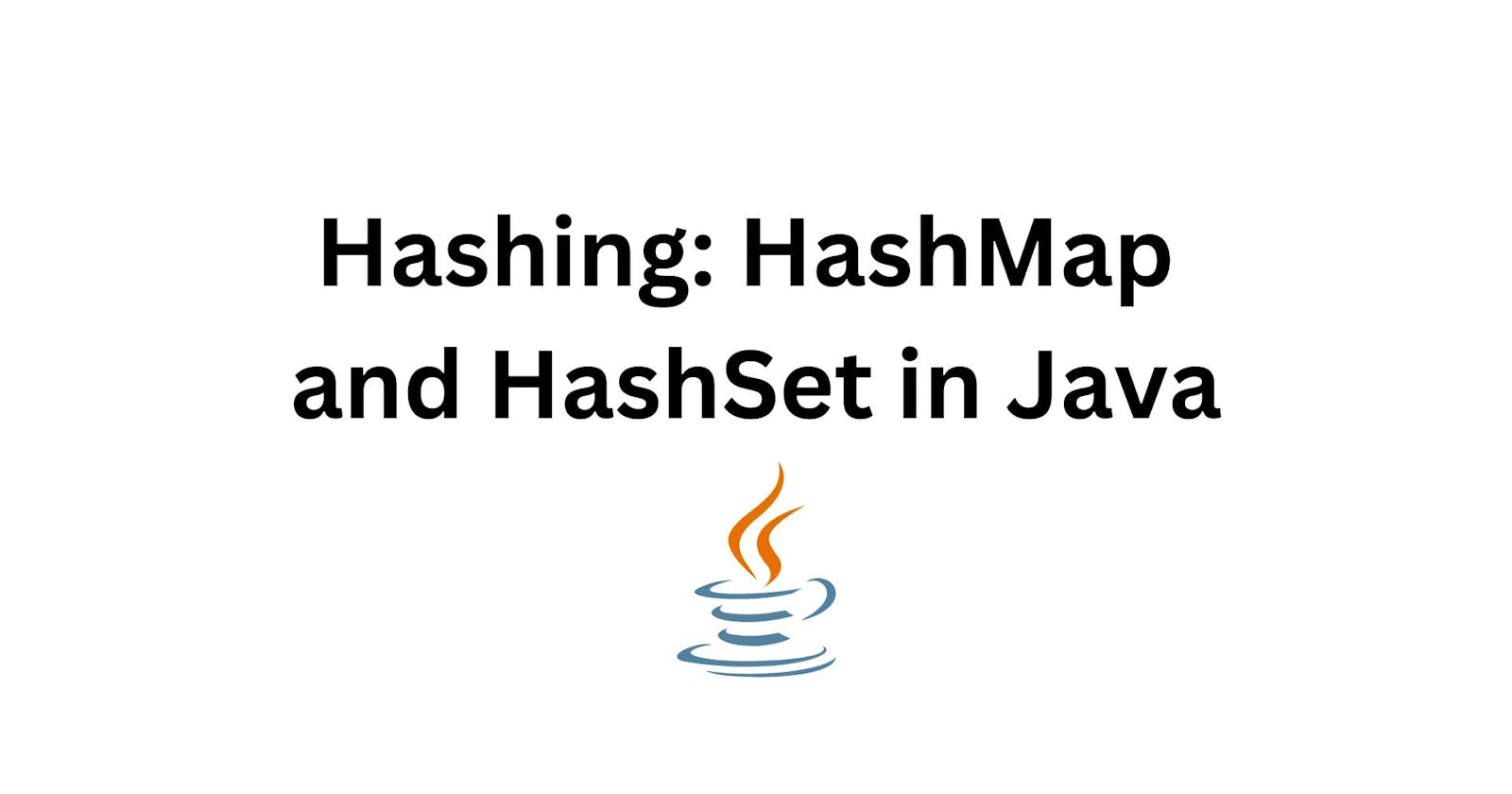Hashing is a fundamental concept in computer science and plays a crucial role in efficient data storage and retrieval. In this blog post, we will explore hashing in the context of Java programming language, focusing on two important classes: HashMap and HashSet. We'll cover the basics of hashing, explain the purpose and usage of HashMap and HashSet, provide Java syntax examples, showcase practical use cases, and discuss problem-solving patterns. So let's dive in!
What is Hashing?
Hashing is a technique used to map data to a fixed-size value, known as a hash code or hash. It takes an input, performs some calculations on it, and produces a unique hash code. The resulting hash code is used as an index or key to store or retrieve data in a data structure.
What is HashMap?
HashMap is a class in Java's Collections framework that implements the Map interface. It provides a way to store key-value pairs, where each key is unique. The keys are hashed to generate hash codes, which are then used to index and store the corresponding values. HashMap allows for efficient retrieval and modification of data.
Java Syntax for HashMap:
To create a HashMap in Java, you need to import the java.util.HashMap class. Here's the syntax for creating a HashMap:
import java.util.HashMap;
HashMap<KeyType, ValueType> map = new HashMap<>();
The KeyType represents the data type of the keys, and ValueType represents the data type of the values.
Important Methods in HashMap:
put(key, value): Inserts a key-value pair into the HashMap.get(key): Retrieves the value associated with the specified key.containsKey(key): Checks if the HashMap contains a specific key.containsValue(value): Checks if the HashMap contains a specific value.remove(key): Removes the key-value pair associated with the specified key.size(): Returns the number of key-value pairs in the HashMap.
Java Example for HashMap:
Let's consider an example where we store the ages of individuals using their names as keys in a HashMap:
import java.util.HashMap;
HashMap<String, Integer> ageMap = new HashMap<>();
ageMap.put("Alice", 28);
ageMap.put("Bob", 35);
ageMap.put("Charlie", 42);
System.out.println(ageMap.get("Alice")); // Output: 28
In this example, we create a HashMap ageMap with keys of type String and values of type Integer. We store the ages of three individuals and retrieve Alice's age using her name as the key.
What is HashSet?
HashSet is another class in Java's Collections framework that implements the Set interface. It represents a collection of unique elements where the order is not important. HashSet uses hashing internally to store and retrieve elements efficiently.
Java Syntax for HashSet:
To create a HashSet in Java, you need to import the java.util.HashSet class. Here's the syntax:
import java.util.HashSet;
HashSet<ElementType> set = new HashSet<>();
The ElementType represents the data type of the elements in the set.
Important Methods in HashSet:
add(element): Adds an element to the HashSet.contains(element): Checks if the HashSet contains a specific element.remove(element): Removes an element from the HashSet.size(): Returns the number of elements in the HashSet.
Java Example for HashSet:
Let's consider an example where we store a list of unique names using a HashSet:
import java.util.HashSet;
HashSet<String> nameSet = new HashSet<>();
nameSet.add("Alice");
nameSet.add("Bob");
nameSet.add("Charlie");
System.out.println(nameSet.contains("Alice")); // Output: true
In this example, we create a HashSet nameSet with elements of type String. We add three unique names and check if "Alice" exists in the set using the contains() method.
Practical Use Cases of HashMap and HashSet:
Data Indexing: HashMap is commonly used for efficient indexing and retrieval of data based on unique keys. For example, it can be used to store user profiles with usernames as keys.
Eliminating Duplicates: HashSet is useful for removing duplicate elements from a collection. It can be used to filter unique values from a list or to check for the presence of duplicates.
Caching: HashMap can be employed as
a cache mechanism, where expensive calculations or database queries can be stored and retrieved quickly using unique keys.
Problem-Solving Patterns with HashMap and HashSet:
Frequency Counting: HashMap can be utilized to count the frequency of elements in a list or string. It is helpful in solving problems related to finding duplicates or analyzing character/word occurrences.
Set Operations: HashSet provides efficient set operations like union, intersection, and difference. These operations are beneficial in solving problems related to finding common elements or distinct values.
Conclusion:
Hashing is a powerful technique that enables efficient storage and retrieval of data in Java. HashMap and HashSet are two essential classes that leverage hashing to provide key-value mapping and store unique elements, respectively. By understanding the concepts, syntax, practical use cases, important methods, and problem-solving patterns of HashMap and HashSet, you'll have a solid foundation to leverage these classes effectively in your Java projects.
Recommended Resources to Learn Data Structures and Algorithms
Basics of DS Algo Blogs:
Recommended YouTubers for LeetCode Problems:
Free Resources for Learning Data Structures and Algorithms:
Recommended Courses for Learning Data Structures and Algorithms:
ZTM: Mastering the Coding Interview (Big Tech): Available on Udemy and ZTM Academy
ZTM: Mastering the Coding Interview: Available on Udemy and ZTM Academy
Data Structures & Algorithms, Level-up for Coding Interviews Course
Top Coursera Courses for Learning Data Structures and Algorithms:
(Note: The Coursera courses can be audited to get free access to the lectures)
Who Am I?
I’m Aswin Barath, a Software Engineering Nerd who loves building Web Applications, now sharing my knowledge through Blogging during the busy time of my freelancing work life. Here’s the link to all of my craziness categorized by platforms under one place: https://linktr.ee/AswinBarath
🎙 Disclosure: Please note that some of the links mentioned on this page may be affiliate links. This means that if you click on one of these links and make a purchase, I may earn a small commission from the sale.
Keep Learning
Now, I guess this is where I say goodbye 👋. But, hey it’s time for you to start learning with your newfound Knowledge(Power)👨💻👩💻. Good Job that you made it this far 👏 & Thank you so much for reading my Blog 🙂.
